I’ve spent more time travelling in Thailand than any other country in the world.
When you consider I’ve been on the move for more than 13 years at this point, you might get some idea of just how much I love this country.
I’ve spent years of my life in Thailand, travelling across the country from top to bottom and east to west. I’ve ventured out on an epic 1000-mile scooter road trip around the little-visited provinces of the north, spent six months living in Chiang Mai, partied my way around Bangkok, and hit up dozens upon dozens of Thai islands — some of which didn’t even have electricity!
If there’s a place in Thailand that you’ve set your sights on, odds are I’ve already been there. And if I have, I can definitely tell you how much it costs to visit.
I’ve been recording every single dollar, peso, and baht that I’ve spent on my travels since 2011 (I now have over 70 budget breakdowns on the site!), aiming to give you an in-depth picture of how much you can expect to spend in every country around the world. Thailand is no different: I have years of receipts and records from my travels in this country, covering every type of expense you could ever conceive of.
The good news is that the costs involved in visiting Thailand in 2024 are still relatively low. This is still one of the cheaper destinations of the world — even post-pandemic — so you’ll always feel as though you’re getting good value for money here.
Backpackers can experience the joys of Thailand for as little as $30 a day while luxury can be scored for just $100 a day. Most travellers will fit somewhere in-between those two numbers, depending on the destinations visited and quality of accommodation required.
(For my European readers, the equivalent prices here are €28/£24 a day for budget travellers and €92/£80 a day for a luxury trip.)
Don’t worry — I’ll be going really in-depth here, sharing every possible expense you’re likely to encounter, all to help you create an accurate budget for your time in Thailand.
Let’s get started.
What’s Included in This Guide
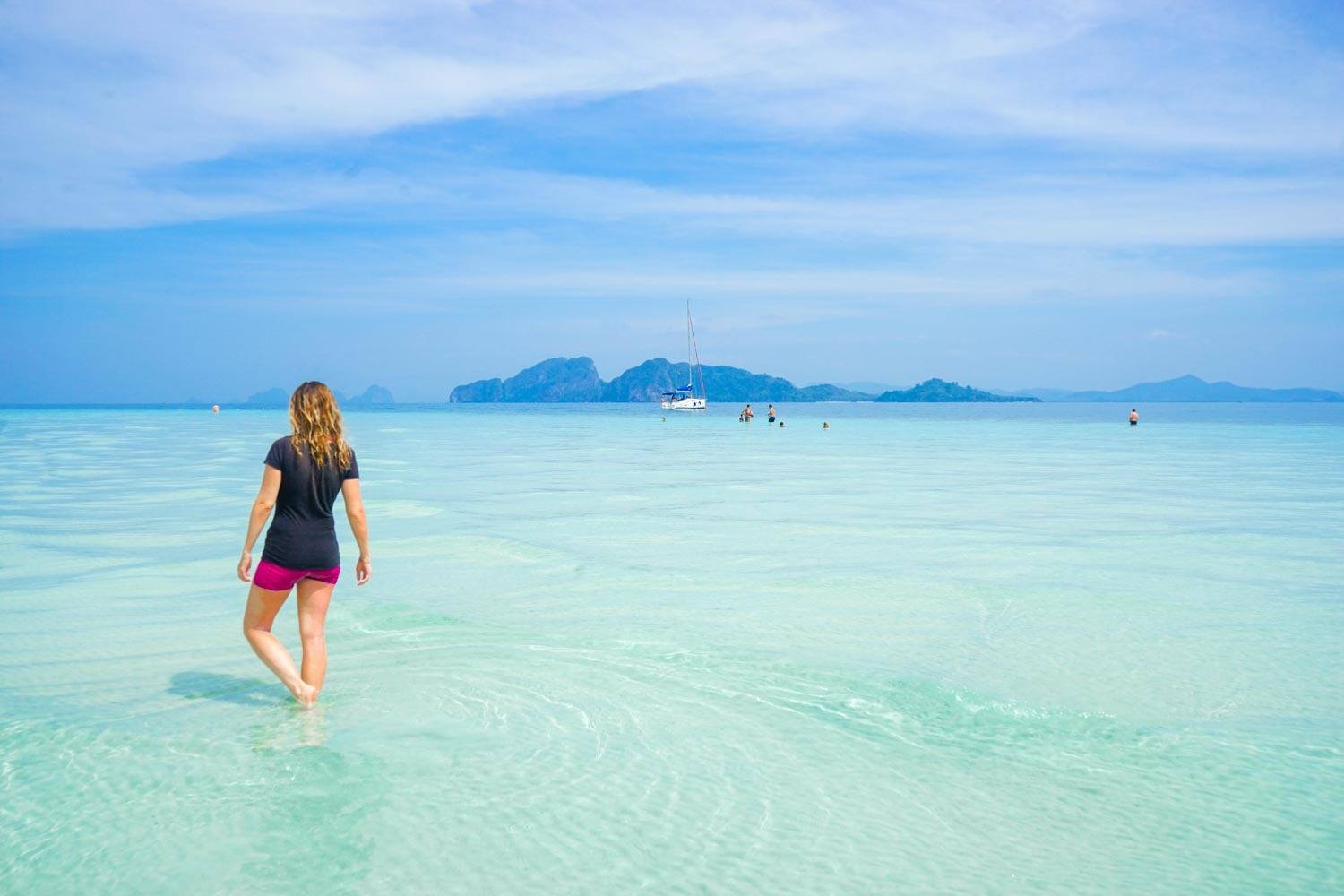
This budget breakdown covers how much I’ve spent on accommodation, transportation, activities, food, and other miscellaneous items while I was in Thailand. I’ve not included my flights into and out of the country, as this will vary based on where you’ll be travelling from.
Most expenses are listed in Thai Baht, then converted into U.S. Dollars, Euros, and British Pounds, simply because that’s where the vast majority of my readers hail from.
I strictly don’t accept comps, freebies, press trips, or sponsored activities, so rest assured that absolutely everything listed in this guide is something I paid for with my own money.
Additionally, I travel anonymously to ensure that service providers treat me the same as they would anybody else; I don’t want to receive special treatment by being a travel writer, as it means I can’t review experiences with accuracy.
All photos are mine and all experiences are based on my own travels in Thailand. I have never, and will never, use AI on Never Ending Footsteps.
As a result, this guide does contain affiliate links. What that means is that if you decide to make a purchase through one of the links in this article, I receive a commission at no additional cost to you. Your support is what helps keep me on the road and Never Ending Footsteps sponsor-free.
Okay — let’s get started with these expenses.
The Cost of Accommodation in Thailand
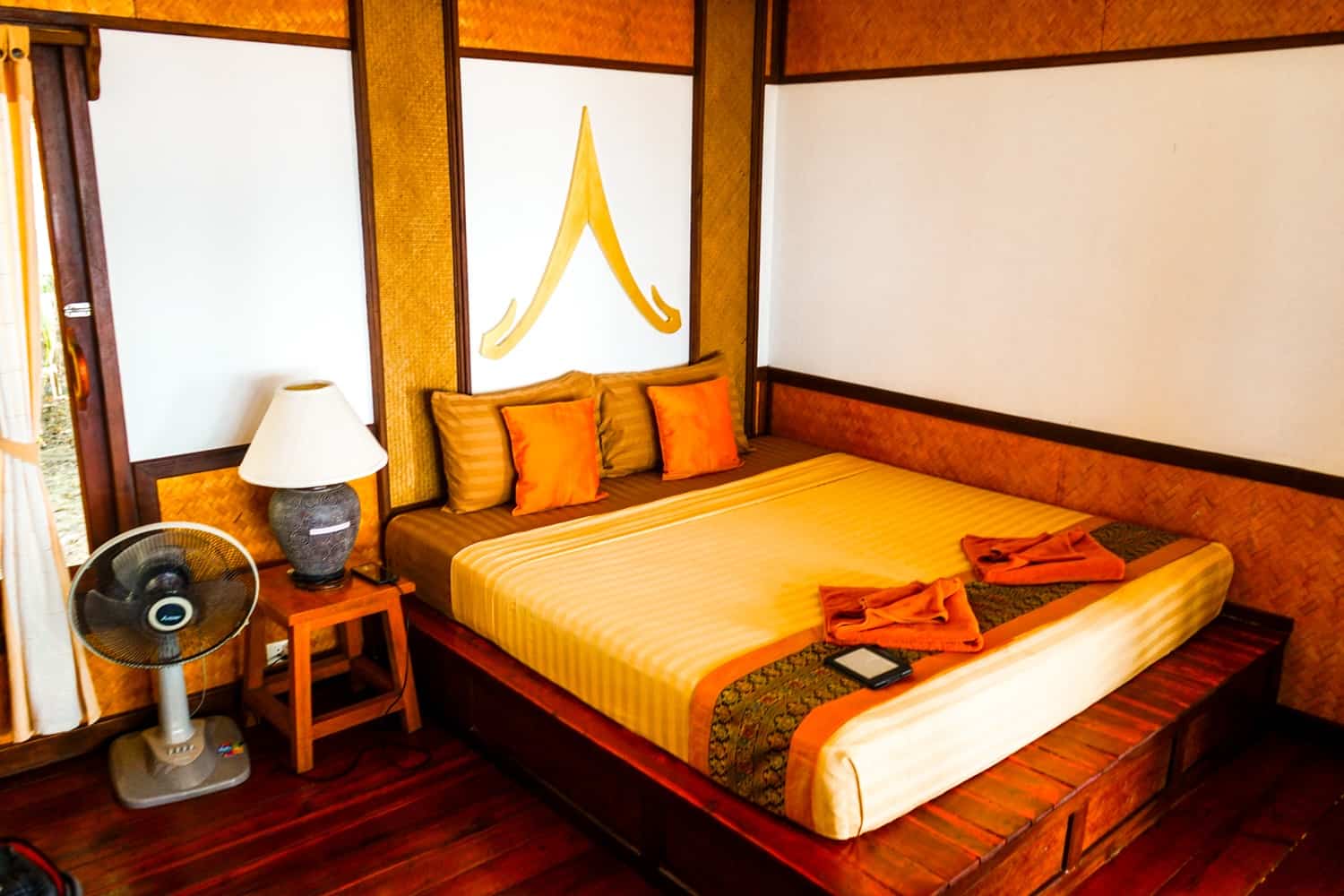
I’ve stayed in over 50 different properties in Thailand, spending anything from $2 a night (€1.80/£1.60) for a bungalow with holes in the wall with a bed that appeared to be made from concrete to a $100 a night (€92/£80) luxury villa with an infinity pool overlooking the ocean. I’ve stayed in high-rise condos in the centre of Bangkok ($19 a night, or €15/18) and rented an apartment in Chiang Mai for six months ($8 a night, or €7/£6).
In other words, I’ve stayed in practically every form of accommodation you can imagine in Thailand, spread out across every budget imaginable.
Let’s start with the cheapest properties available and then work our way up.
If you’re going to be backpacking Thailand on the tightest budget imaginable, hostels will allow you extend your trip by months rather than days. You’ll find dorm rooms all over the country and they’re one of your best options for saving money and making friends.
As you work your way through my article, you’ll soon come to discover that the prices in Thailand are broken down into two distinct groups: the mainland and the islands. And the mainland is so much cheaper than the islands — sometimes as much as 50% cheaper. Because of this, I’ll be giving mainland and island prices separately throughout the guide.
So in terms of hostels on the mainland, you can score yourself a bed in a dorm room for $2.50 a night (€2.30/£2), but I actually recommend increasing your budget to $5-7 a night (€5-6 or £4-5 a night). On the higher end of that spectrum, you can find a spot in a clean, cosy, highly-rated property. Two of my favourite budget hostels in this part of the country are Time Sabai 32 in Bangkok at $7 a night and Tangmo House in Chiang Mai for $6 a night.
If you’re more of a flashpacker and would prefer to stay in the best hostel in a city, there are plenty of modern, higher-end options to suit your needs for $10-12 a night (that’s €9-11 and £9-10). In Bangkok, I’m a huge fan of the Yard Hostel ($12 a night), which is located in my favourite neighbourhood of Ari (hipster vibes; excellent food), while About a Bed ($11 a night) in Chiang Mai is the definition of bright, light, and airy.
All of those prices above are for dorm beds, but if you’re more of a private room person (I know I am!), prices are still affordable; roughly double the cost of a single dorm bed. For a double bed in a private room in a hostel, you’ll be looking at $17 a night to $25 a night (that’s €16-23, or £13-20 a night) depending on whether the hostel is aimed at backpackers or flashpackers.
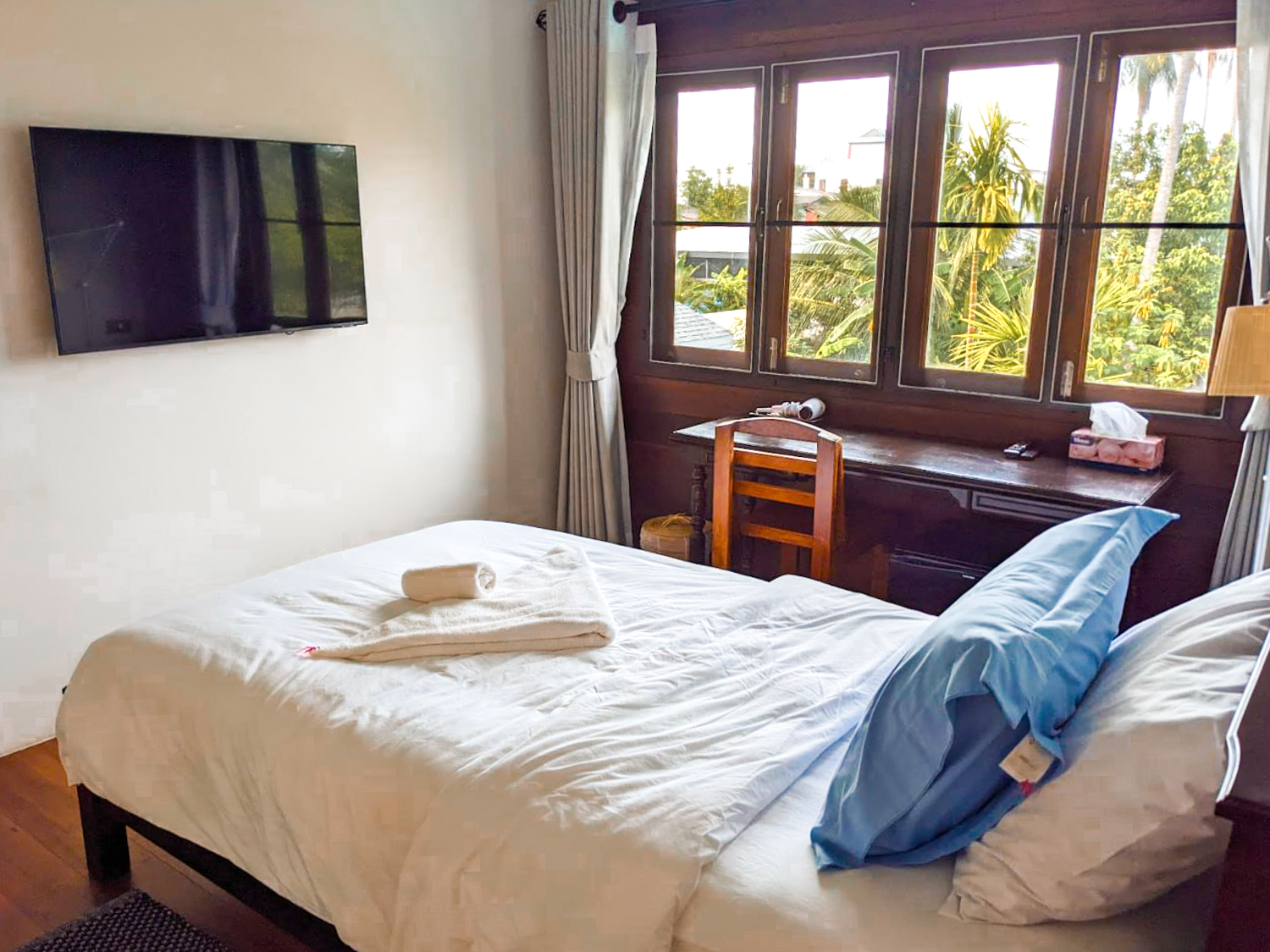
But what about the budget options on the islands? Now, hostels are more of a rarity on the Thai islands. They do exist and they are the cheapest options out there, but some people — especially couples — will opt for a basic wooden bungalow on the beach instead; they’re usually priced similarly.
Still, when hostels do exist, you’ll be looking at paying a minimum of $8 a day (€7/£6) for a dorm bed for a cheap hostel that isn’t rated terribly. To give a few examples: Aforetime House on Koh Samui comes in at $8 a day. The 10 Club Hostel on Koh Phangan is $11 a night while Aha Lanta Cozy Hostel on Koh Lanta is $11 a day.
When we move into the flashpacking realm of accommodation (so looking at the best hostel on an island), you’ll be up for $17 a day (€16/£13). Some of the places I know and love in this price range include the View Hostel on Koh Phi Phi for $18 a day, Blessings Hostel on Koh Phangan at a price of $14 a day, and Wonderland Jungle Hostel on Koh Tao for a price of $18 a day.
When it comes to private rooms, I’d actually recommend avoiding staying in hostels and instead suggest looking at budget guesthouses and bungalows on the islands. Reason being: there’s usually dozens of guesthouses in comparison to a handful of hostels, so you’ll have more options. The guesthouses are often cheaper than private rooms in hostels, and tend to be much quieter. You’ll be looking at $20-35 a night for a budget guesthouse on a Thai island. That works out at €19-32 and £16-28 per night.
The prices I’ve given above are for the more popular Thai islands (which you’re more likely to be visiting); these are places like Koh Phi Phi, Koh Samui, and Koh Phangan. There are cheaper Thai islands out there (where prices are around 60-80% cheaper than the more touristy islands), like Koh Chang, so you could cut prices by visiting some of the less popular islands in the country, too.
To summarise, here’s what you can expect to pay for accommodation if you’re visiting Thailand on a budget:
| Mainland (per night) | Islands (per night) | |
| Dorm room in a cheap hostel | $6 – €6 – £5 | $10 – €9 – £8 |
| Dorm room in a flashpacker hostel | $11 – €10 – £9 | $17 – €16 – £13 |
| Private room in a flashpacker hostel | $23 – €21 – £18 | $28 – €26 – £22 |
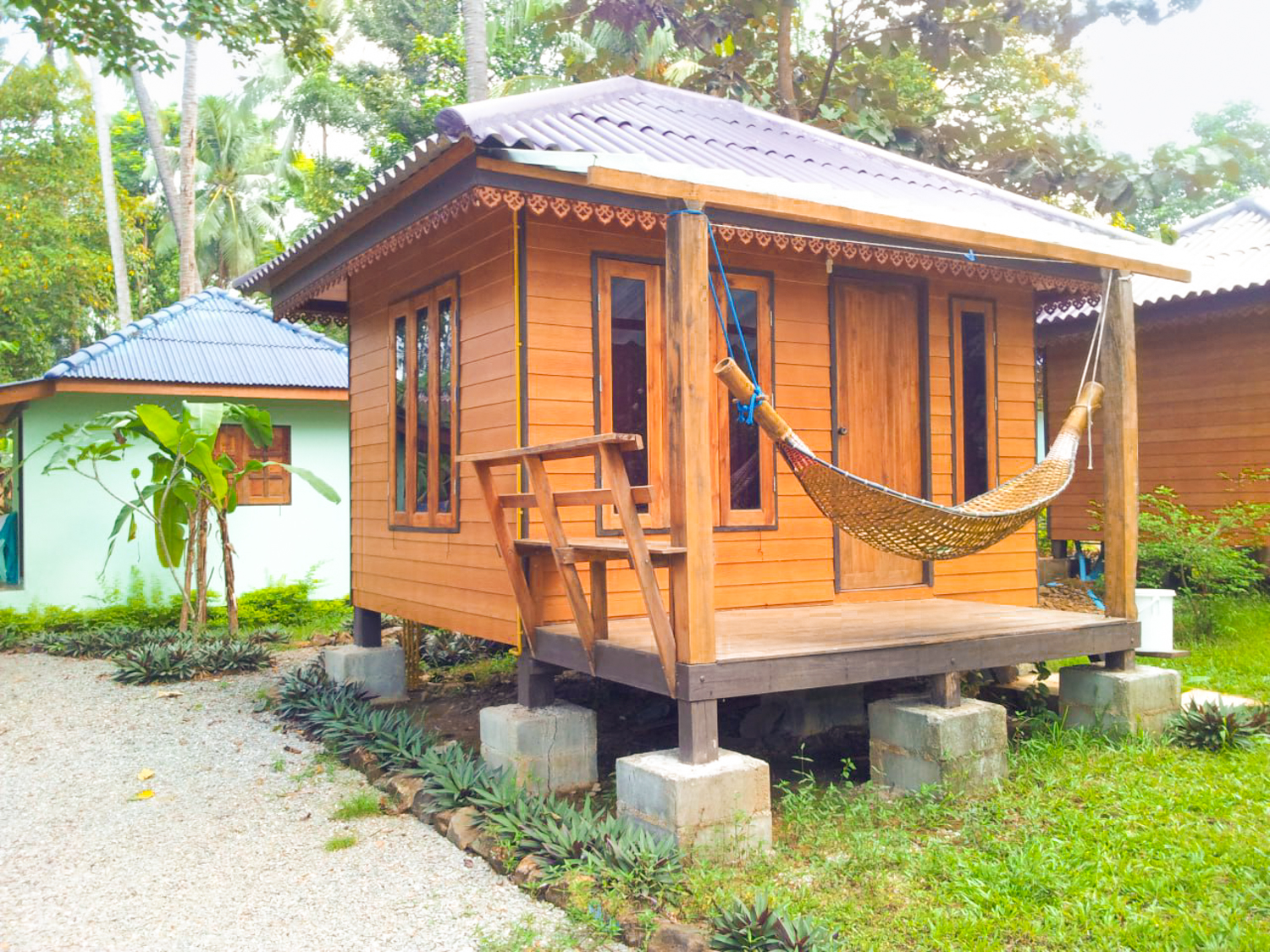
There’s also a few options for totally free accommodation in Thailand.
If you’re on a really tight budget, you can stretch out your baht by making use of some of the free accommodation options in the country. Couchsurfing has been a backpacking staple for over a decade now, and there are thousands of hosts scattered across Thailand. If a host agrees to let you stay with them, you’ll be able to gain an insight into life in Thailand that’s always going to be tough to experience when staying with other travellers in hostels.
Housesitting is another option if you’re going to be trying to save as much money as possible but want to stay in high-quality accommodation. Take a look at Trusted Housesitters, where there are always a dozen options up for grabs in the country. Housesitting allows you to stay in somebody’s house for free, usually while taking care of their pets, and is a fantastic way to spend more time in Thailand without breaking the bank. I have friends who have housesat villas on private islands and castles in Europe before!
Finally, when it comes to free accommodation, you could also check out WorldPackers. You’ll receive free lodging and food in exchange for helping to teach English, working on a local eco sanctuary, or even caring for sick turtles. You’ll likely make tons of new friends, learn a new skill, and see a side of Thailand that few travellers get to experience. Readers of this site get a $10 discount for WorldPackers with the promo code neverendingfootsteps. WorkAway is a fantastic option in Thailand — similar to WorldPackers — that’ll net you a free stay in exchange for a more diverse choice of work (think: volunteering for elephant sanctuaries, rescuing sick animals, and helping a local artist with their sculptures).
In Thailand, I don’t recommend even looking at Airbnb. Prices are typically sky-high, and most of the time, it’s guesthouses that are listing on there anyway — at higher prices than they do on Booking.
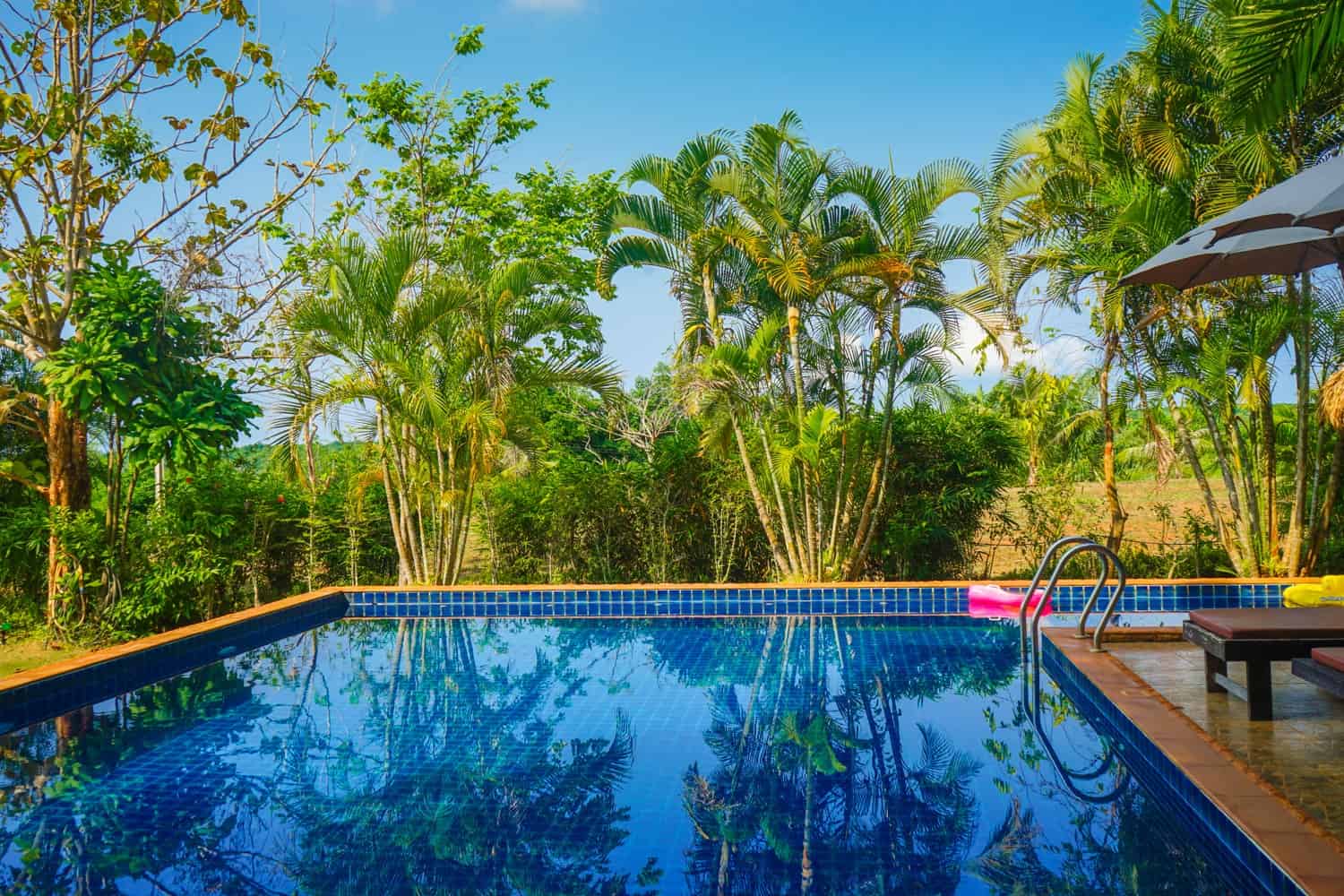
With all of the budget accommodation options now covered, it’s time to look at what you can get in Thailand on a mid-range or high-end budget. This is one of the true joys of travel in Thailand; receiving tons of value for your money and getting to splurge on some truly incredible properties.
Over the past three or four years, I would describe myself as a mid-range traveller to Thailand. I’m not looking for budget bungalows and basic guesthouses anymore. No, now I appreciate access to A/C, a beautiful swimming pool, quiet surrounds, a desk to work at, and a comfortable bed. The good news is that you can achieve all of that with a budget that’s between $40 and $60 a night, which is €37-55 or £32-48 per night.
If you’re a luxury traveller in Thailand, the sky’s the limit here. If you’re accustomed to stayed in five-star hotels, you’ll find them to be very reasonably priced. To give a handful of examples of five-star properties in the country:
- 137 Pillars Bangkok (best pool in the city!): $141 a night
- Melia Koh Samui (super luxurious): $151 a night
- Zeavola Resort Koh Phi Phi (great for honeymoons): $173 a night
- Intercontinental Phuket (the best hotel in town): $350 a night
- Four Seasons Chiang Mai: $633 a night
- Six Senses Koh Yao Noi: $620 a night
Those final two properties are my two wishlist properties for Thailand, by the way. I’ve been wanting to stay at both of them for over a decade now! If you have the budget to splurge, they both look absolutely incredible.
Otherwise, you can see that it’s possible to snag a stay in a five-star hotel for as little as $150 a night in Thailand!
The Cost of Transportation in Thailand
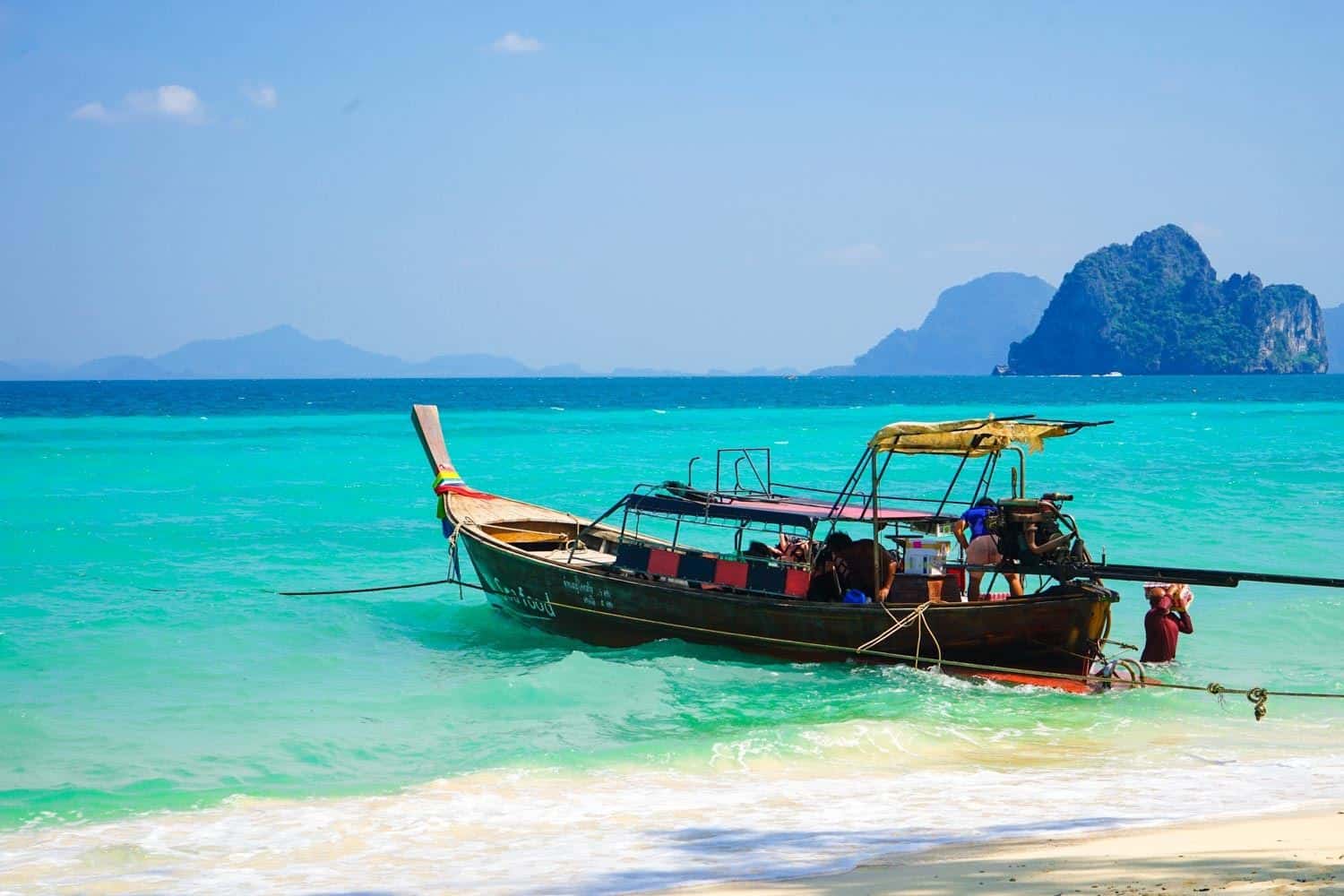
There’s no end of transportation up for grabs in Thailand and almost all of it is a delight to experience. From tuk-tuks to songthaews to longtails to moto-taxis, if you’ve got somewhere to be, there’s undoubtedly a fun method of transportation to take you there.
The good news is that it’s all very inexpensive, so you shouldn’t find yourself spending much at all.
The easiest way to save money on transportation is to avoid taking the flights and speedboats, but even those can be plenty affordable. I’ve rarely spent more than $50 on a domestic flight in Thailand, for example, thanks to the existence of Air Asia, so if you’re short on time, you’re not going to be mad at the prices here.
One thing I love about Thailand is how the transportation process is the definition of seamless; it feels like magic at times.
As an example, I once wanted to travel from the island Koh Yao Noi to Phuket Airport. I spoke to a travel agent on the island, gave her some money ($18), and she handed me a white piece of paper seconds later. With that single “ticket”, I was able to travel from my bungalow to the airport via multiple methods of transport.
A tuk-tuk collected me from my front door and took me to the dock, where I then transferred on to a ferry to take me to Phuket. Once I arrived back on the mainland, a minivan was waiting for me at the ferry terminal to drive me straight to the airport.
The fact that all of those moving parts were able to co-ordinate with each other so seamlessly — based on a single piece of paper that a travel agent scrawled a handful of words on — is something that’s always been so impressive to me!
Needless to say, this is a country where moving from place to place is one of the simplest tasks you could conceive of. Trust me: if you’re nervous about travelling around the country, you absolutely shouldn’t be.
So let’s talk about costs.
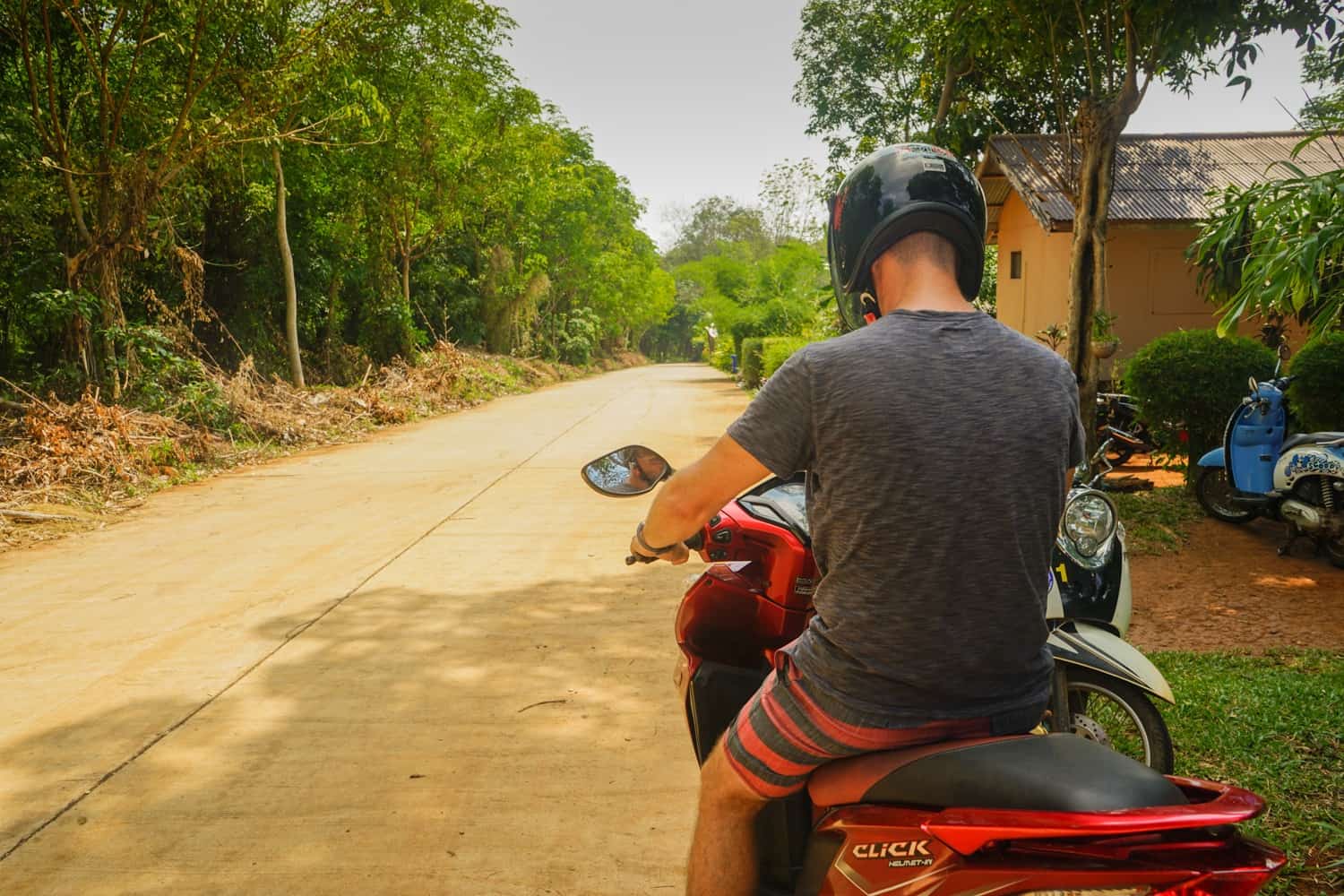
When it comes to getting between destinations, and travelling long distances as you do so, it’s always going to be cheaper to travel overland.
Minivans, buses, and ferries — or a combination of the three — can take you anywhere you need to go in Thailand. It’s true: even if you want to visit somewhere really off-the-beaten-track, there’ll always be someone who’s willing to take you there.
The easiest way to travel across the country is by utilising the travel agents that are found on practically every street in tourist destinations. They’re easy to spot as they’ll have a list of destinations and prices displayed on a board outside. Head inside, tell them where you need to go, and you’ll usually have a ticket in hand within a couple of minutes.
For spontaneous travellers, you’ll be happy to hear you can nearly always book transportation for the following day through travel agents, making it easy to craft an itinerary on the fly.
I personally use the website 12Go Asia when I travel in Thailand. It provides the same service as the travel agents, but you’re booking online instead. It’s sometimes a little more expensive than going in person, sometimes a little cheaper, but it’s definitely more convenient! Being able to read reviews of the different buses and being able to book far in advance has helped make it my go-to in this part of the world.
One thing you could do is check out the prices online through 12Go and then head to a travel agent in person to compare the rates. That way, you’ll have a maximum price that you’re willing to pay for the journey.
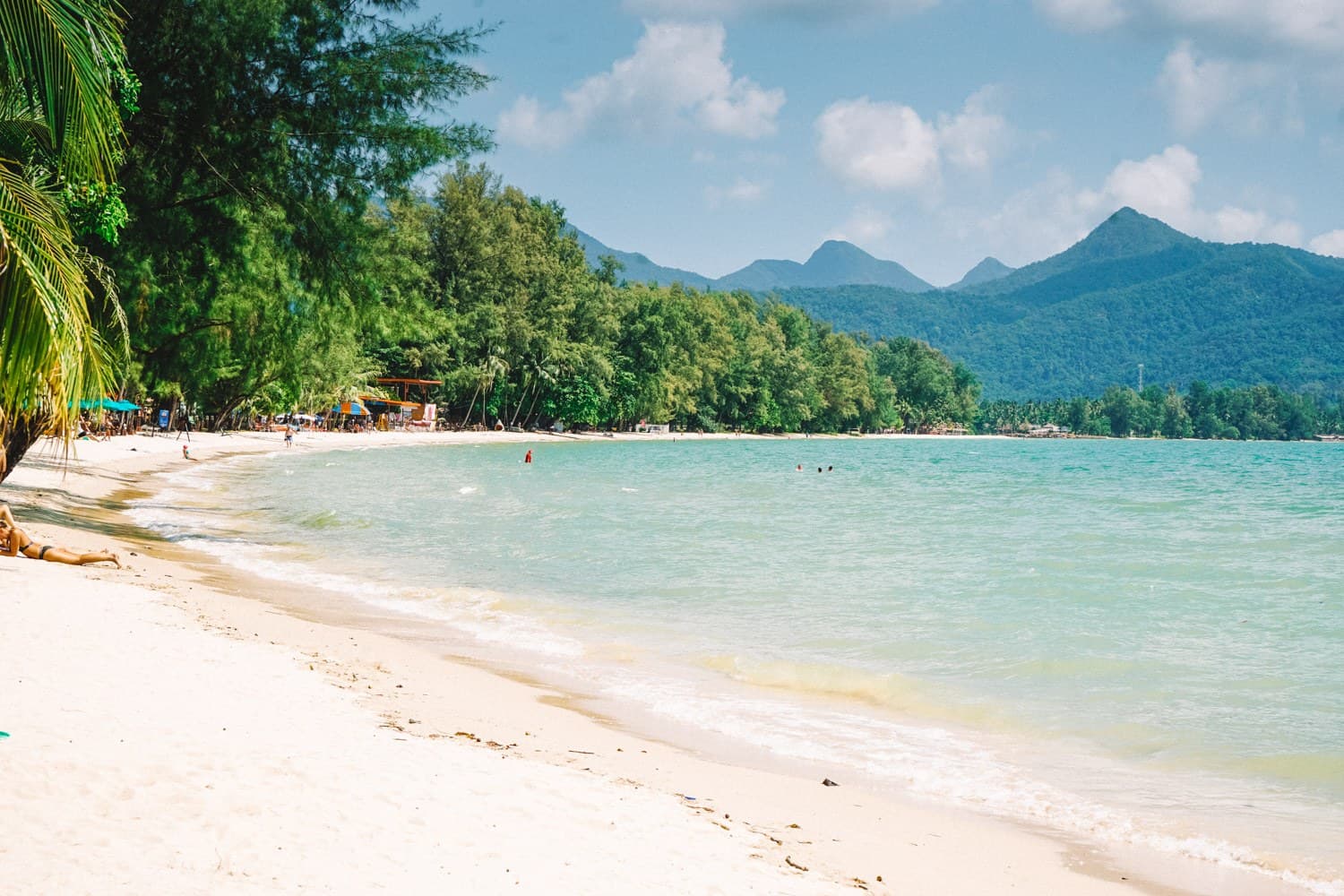
When travelling around the mainland, it’s always going to be most expensive to fly, followed by taking a minivan, bus, and then (if it exists), the train.
For example, to get from Bangkok to Chiang Mai:
- By plane: $35
- By minivan: $26
- By bus: $15
- By train: $7
Or from Bangkok to Phuket:
- By plane: $35
- By minivan: $30
- By bus: $21
Or from Bangkok to Koh Samui:
- By plane: $60
- By minivan+ferry: $40
- By bus+ferry: $30
- By train+bus+ferry: $19
It sounds like overland travel is going to be the best option when you’re looking at the prices, but you’ll also want to take into account the journey duration as well. For example, the flight from Bangkok to Koh Samui takes one hour while the bus and ferry takes as much as 14 hours! The journey from Bangkok to Chiang Mai takes one hour to fly while the minivan takes 8 hours and the train takes 12 hours!
Overnight trains and buses do exist, and make for a good option if you’re trying to maximise your daylight hours in Thailand. Don’t underestimate the effect they’ll have on your sleep, though! My overnight train ride from Chiang Mai to Bangkok ($7) essentially vibrated us all the way down the country, only breaking up the shaking with a horn that emitted a deafening bellow every 10 minutes. I was exhausted afterwards and slept much of the next day away!
If you’re on a tight budget and have an abundance of time, though, you likely won’t stress over these long travel days. If you only have a limited number of days in the country, you might want to fly.

One of my favourite aspects of travel in Thailand is the island-hopping. I return to this country each and every year with the sole goal of exploring a brand new chain of islands. Getting between the islands involves taking some form of boat, whether it’s a speedboat (twice as fast; more expensive than the ferries), a ferry, or a longtail.
I tend to always use the ferries when getting from one island to the next; to me, the speedboats don’t offer that much more value for me to be able to justify paying a higher price. Not to mention I also suffer from seasickness and the increased speeds on the speedboats always make for a bumpier ride! Finally, while the speedboats seat around 20 people, the ferries hold more like 100 people; the larger size and slower speeds means you can walk around and sit out on the sundeck.
I’ll usually only hire a longtail (a narrow wooden boat with a propeller affixed to the back) if I can get from one island to the other in less than an hour. I do adore travelling by longtail, as it always has me feeling like ~I’m in Thailand~ but these watercraft are loud, polluting, and offer no shelter from the sun. I wouldn’t want to be sat on board one for four hours straight!
Let’s take a look at the prices I’ve paid for a ferry while island-hopping in Thailand, along with the equivalent rates for a speedboat or longtail, when either is an available option. Again, I book my boat journeys online through 12Go Asia.
Phuket to Koh Phi Phi:
- By ferry (two hours): $12
- By speedboat (one hour): $17
Koh Phi Phi to Koh Lanta:
- By ferry (one hour): $12
- By speedboat (30 minutes): $19
- By longtail (90 minutes): $35
Koh Samui to Koh Tao:
- By ferry (two and half hours): $16
- By speedboat (90 minutes): $19
Koh Chang to Koh Kood:
- By ferry (three hours): $20
- By speedboat (two hours): $33
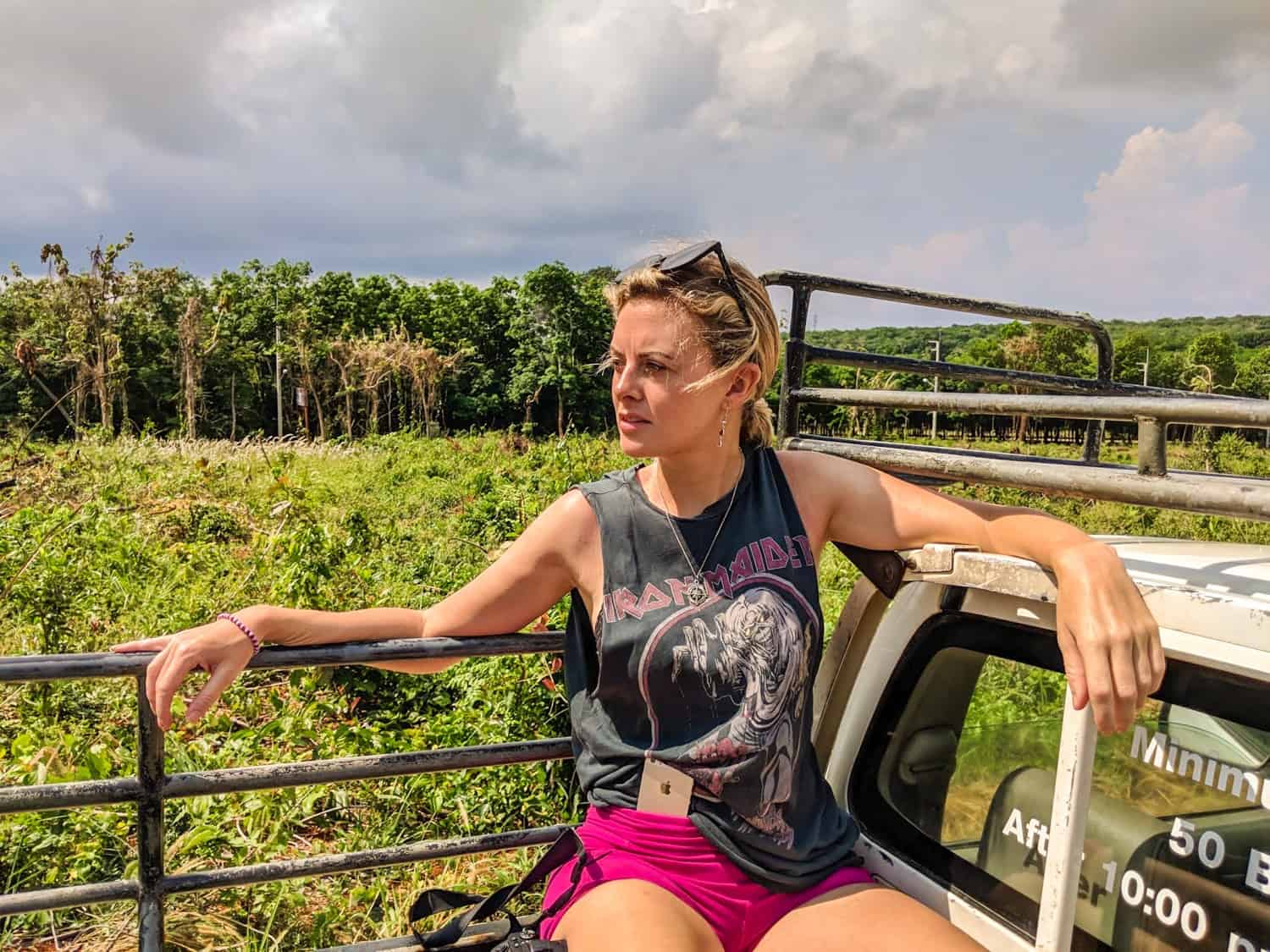
We’ve covered how much you’ll spend on getting from one location to the next, but what about when you get to your destination? How much can you expect to spend on transportation within the cities, towns, national parks, and islands? Let’s start with Bangkok.
Not only is the capital home to the only mass transit system in the country, but it’s actually home to two different ones! The MRT operates mostly underground while the BTS runs aboveground; combined, they have over 100 stations spread out across the city. They also provide the fastest, cheapest, and easiest way to get around. Unfortunately, the MRT and BTS are run by two separate companies, so you can’t travel on both with the same ticket; in reality, though, it’s not a big deal to switch from one to the other.
If you’re only going to be in Bangkok for two or three days, I recommend just buying single journey tokens for the MRT and BTS. On the BTS, you’ll pay between 17-62B for a single ride; on the MRT, you’ll pay 14-43B for a single ride. Google Maps is great for public transportation in Thailand and can provide you with an accurate breakdown of which trains will get you to your destination.
The MRT and BTS can’t get you everywhere there, so taxis — and mototaxis (sitting on the back of a motorbike) — are another great option. Download Grab and Bolt (the equivalents of Uber) before you arrive in Thailand, as you’ll likely be using them often. Bolt is usually cheaper, but Grab has more taxi drivers using it, so start with Bolt.
In terms of cost, it’s all very inexpensive. For a 10 minute, 1.5 mile (2.5 km) journey, like from Khaosan Road to the Grand Palace, you would be looking at 80B ($2.20) for a Grab taxi or 40B ($1.10) for a mototaxi. You can expect to spend double that price on the islands, like on Koh Samui. Note that some large islands, like Koh Lanta and Koh Chang don’t have Grab/Bolt or public taxi services, so it’s best to double-check before you arrive.
One of the worst-value ways of making your way around Thailand is by tuk-tuk. It’s mostly the tourists that use this method of transport, but it is an exhilarating way to explore a new place. I always recommend that visitors taking a tuk-tuk once, so that you can have that new experience. After that, though, I’d stick with the taxis. Expect to spend around $5 to travel for a mile or two by tuk-tuk, in comparison to $2.50 for Grab or Bolt.
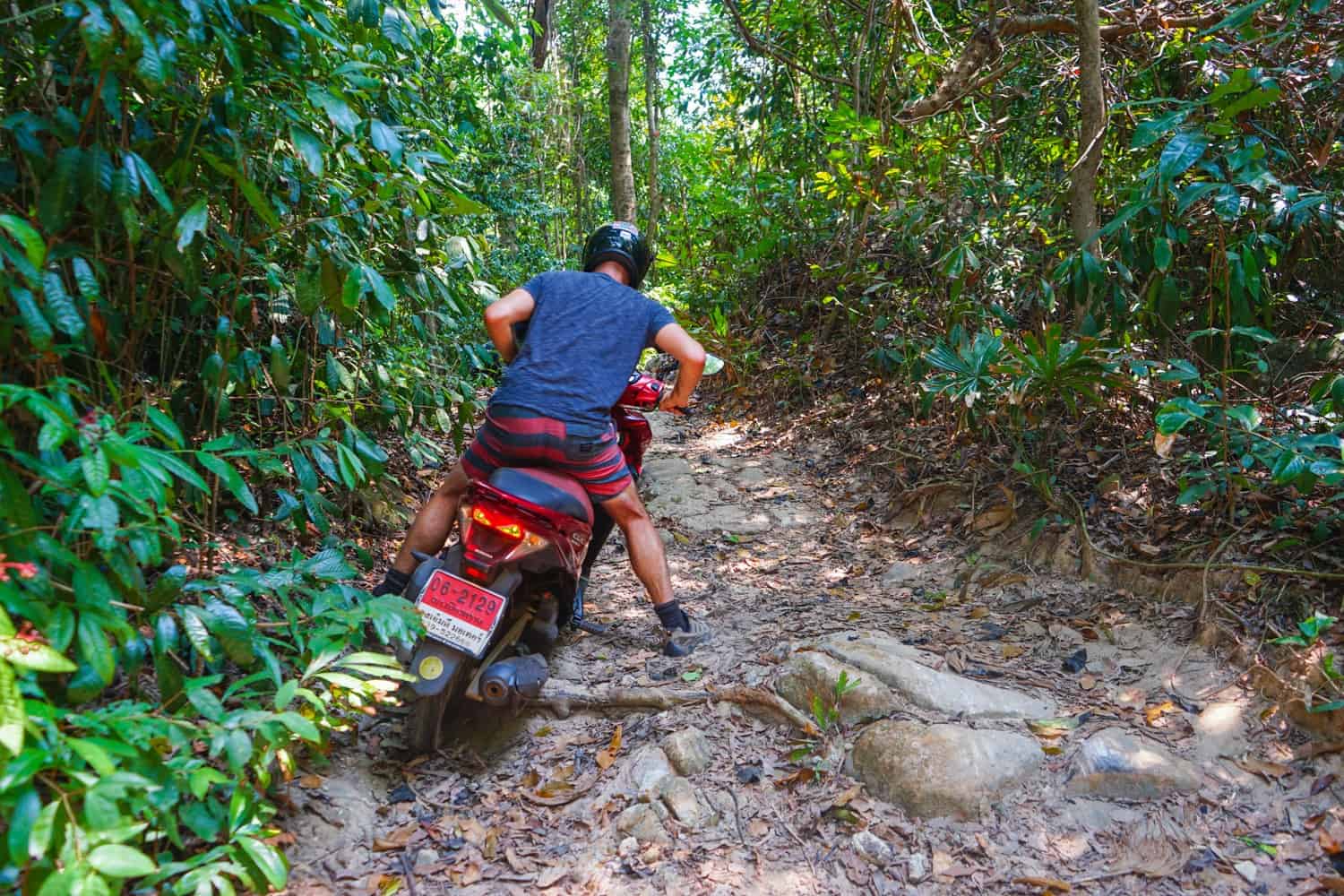
One of my favourite methods of exploring Thailand is by scooter, but I have to stress that if you don’t have experience riding a motorbike, this is one of the most dangerous activities you can undertake. One of my friends died in a scooter crash in this country, so I’m speaking from personal experience. If you don’t have riding experience, please be careful — and please don’t drink and drive.
Keep in mind, as well, that if you don’t have a motorbike driving license, you won’t be covered by travel insurance if you get in a crash. I’ve seen so many GoFundMe’s from injured travellers in Thailand who are now facing a six figure medical bill to get home.
Fortunately, my partner has a motorbike license and has racked up thousands of miles in Southeast Asia on two wheels, so I feel safe and happy sitting on the back of his ride in Thailand. And this is an incredible way to explore the country. While I’d recommend skipping riding a scooter on the mainland (lots of traffic), it’s so much fun to cruise around the islands this way.
Expect to pay $7 to hire a scooter for a day, or $5 a day for a week; $4 a day for a month.
The Cost of Food in Thailand
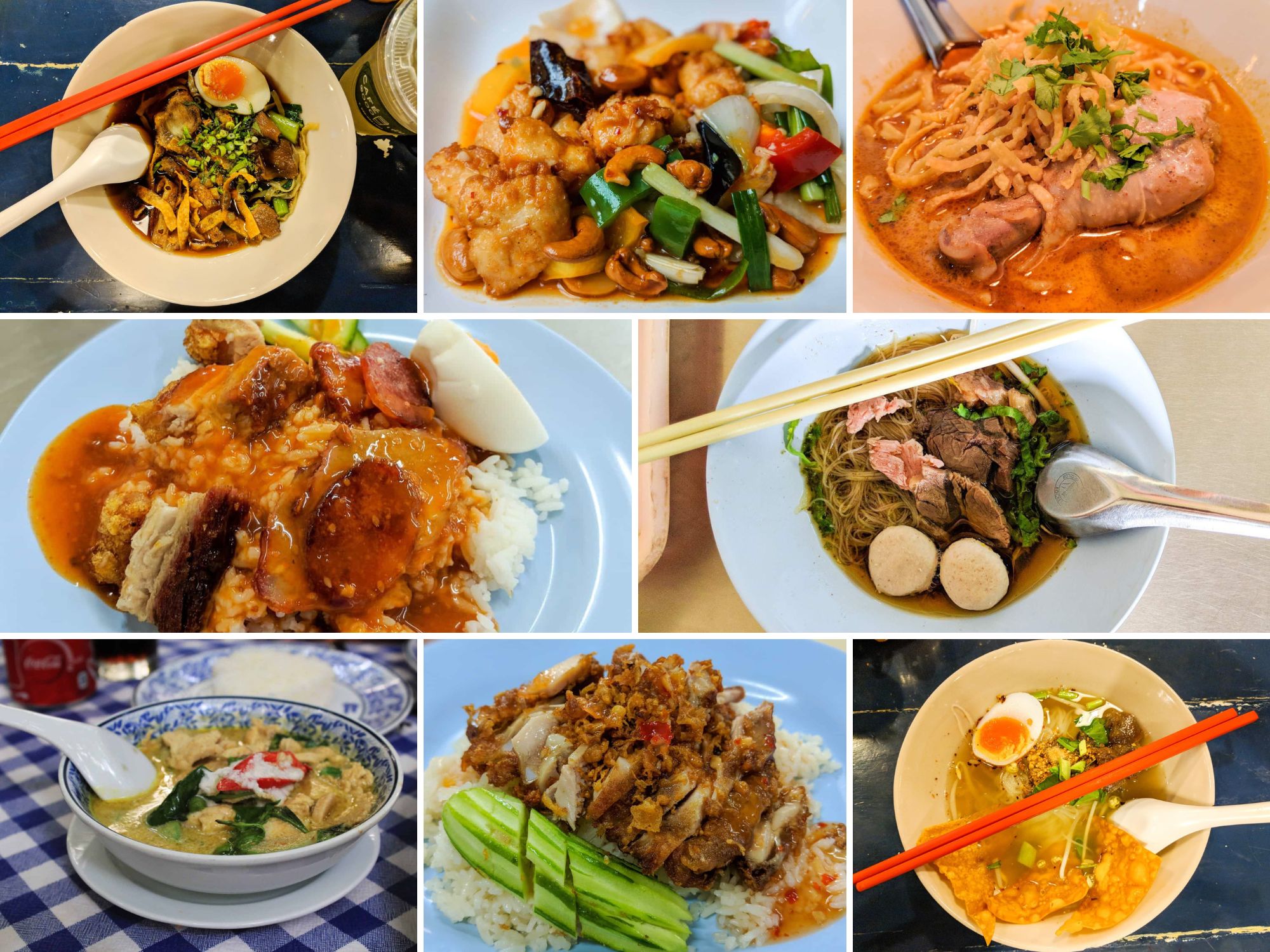
Thai food is some of the best in the world.
In this country, it’s truly a delight just to eat — it’s an activity in its own right! — and you’ll discover so many incredible dishes beyond pad thais and green curries. What’s even better is that some of the best food in Thailand is found on its streets, accessible and cheap, and costing just $2 a meal.
Trust me: you’re going to eat extremely well here.
Before I jump into more specific pricing details, I want to quickly address any worries you may have around food hygiene. After all, if street food isn’t common in your home country, it’s understandable that you’d be concerned about food poisoning.
Well, as somebody who has suffered from food poisoning in Southeast Asia more than a dozen times, let me tell you that I’ve never fallen unwell from eating street food. As long as you follow my four simple rules (only go to a popular food stand, with locals in the queue, with a high turnover, and nobody handling money and food with the same hand), you’ll be safe to eat on the streets.
The times when I have fallen sick have been after venturing inside a restaurant that’s serving international cuisine. Just don’t do it!
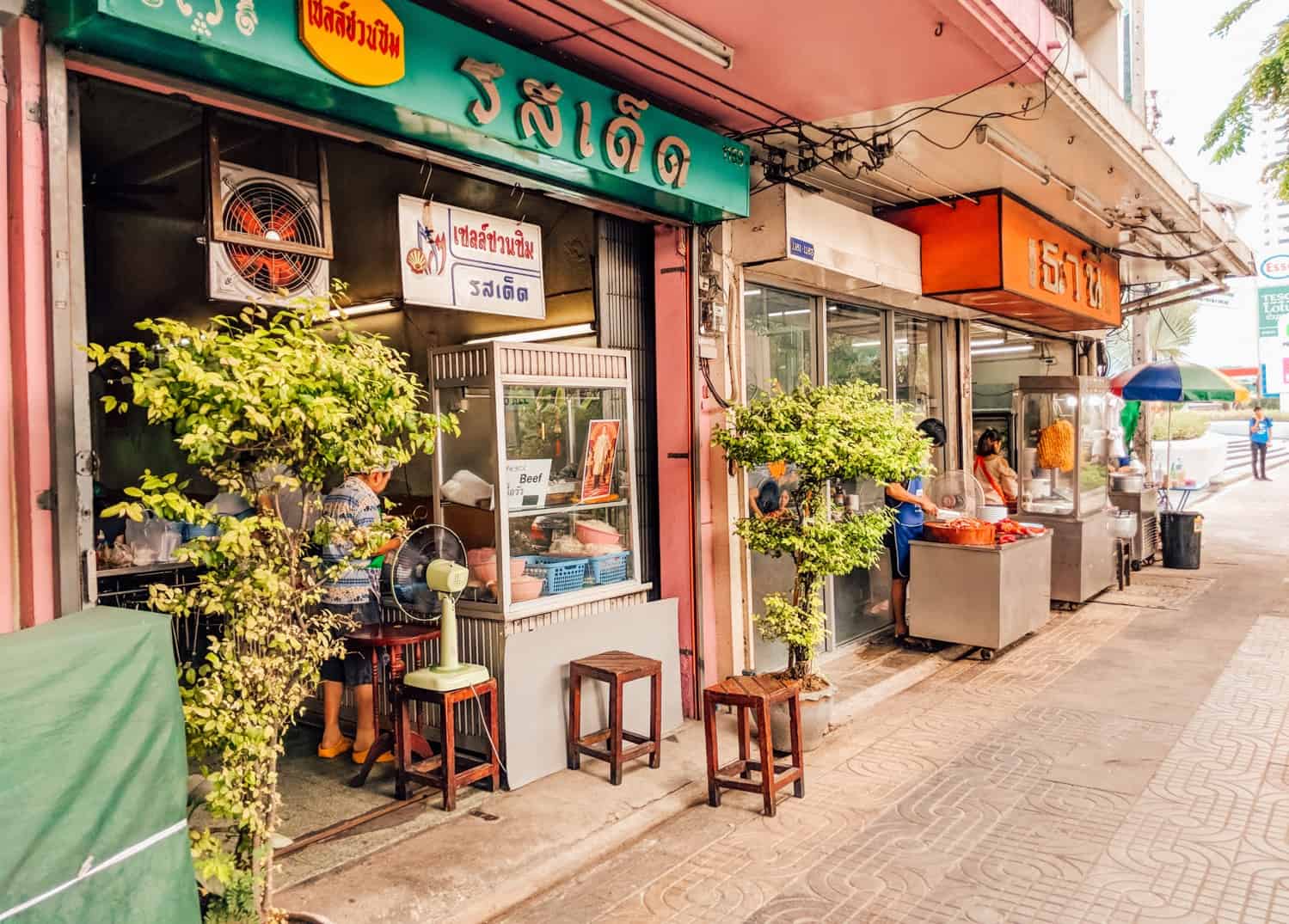
So let’s talk about prices. If somebody tells you that you can travel in Thailand while only spending $1 per meal, you can assume their information is outdated. That was the case when I was there in 2014, for sure, but in 2024, prices aren’t quite that low.
That’s not to say that they’re anywhere near expensive, however. In fact, eating in Thailand is still very affordable — as long as you’re happy to eat Thai food.
If you wanted a really rough ballpark for food costs, I’d suggest that budgeting $10 a day for food in Thailand is a great place to start.
If you’re going to be on the tightest of backpacker budgets, eating only local food from street food carts, you could cut that down to $6 a day without too much difficulty. If you’re looking to occasionally splurge and eat inside restaurants, then $20 a day is a good estimate.
It’s probably easiest if I give you a rundown of different Thai dishes and the average prices you can expect to pay for them:
- Khao soi with chicken: 100B ($2.75/€2.50/£2.20)
- Pad krapow with pork: 80B
- Pad Thai with shrimp: 80B
- Tom Yum soup with vegetables: 120B
- Green curry with beef: 140B
- Penang/Red/Massaman curry with chicken: 130B
- Chicken fried rice: 90B
As you can see, the vast majority of Thai dishes come to between 80B and 150B ($2.20-4.12) per meal. You can find slightly cheaper prices at night markets and restaurants that are set up for locals. You’ll pay 20% more for food on the islands.
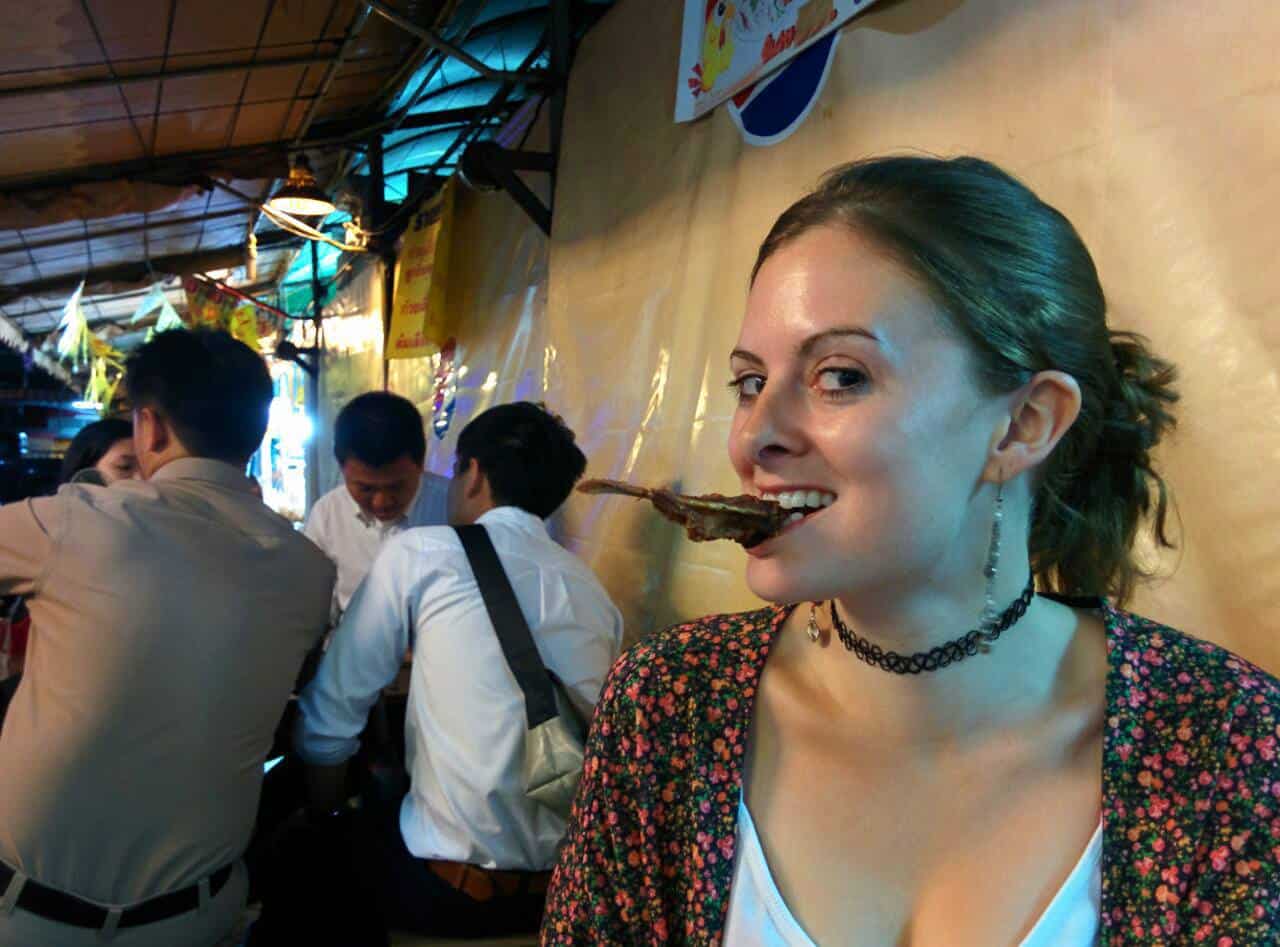
If you were thinking about straying from Thai food for any of your meals, it’s most likely going to be for breakfast.
This is a country where the locals will opt to eat the same food at breakfast as they would for any other meal. And I don’t know about you but I’m never particularly excited by the prospect of a fiery curry for breakfast.
The good news is that the vast majority of destinations in Thailand are home to hipster cafes and bakeries, serving up more Westernised breakfast options. Don’t expect it to be as amazing as you’d get at home — and the bread is nearly always alarmingly sweet — but you can usually find some excellent options, even on the small islands.
Pancakes are usually great in Thailand (the popular backpacking route in Southeast Asia isn’t named the Banana Pancake Trail for nothing!) but you can also easily get omelettes, bagels, waffles, and toast, too. In general, you can expect to spend between 50 and 250B for breakfast, depending on how hungry you are. That’s a range of between $1.50 and $7, so you’ll save quite a bit of money if you can get by with toast and jam instead of a huge Full English!
- Toast with butter and jam: 50B
- Bagel with cream cheese: 90B
- Banana pancakes: 120B
- Avocado toast: 140B
- Ham, cheese, and mushroom omelette: 140B
- Toast with bacon and eggs: 180B
- Smoked salmon eggs Benedict: 220B
- Smoothie bowl: 220B
- Full English breakfast: 250B
When it comes to international options, keep in mind that the quality is often not quite what you might be expecting (although reviews on Google Maps should help you choose a highly-rated spot) and the prices are much higher. Think: a pizza for 300B ($8), a cheeseburger for 250B ($7), or nachos for 280B ($7.50).
Overall, expect to spend $2 a meal if you’re eating cheap local food and visiting night markets, $3 a meal if you’re eating local food predominantly in restaurants, or $5 a meal if you’re going to be mixing things up with some international options every now and then.
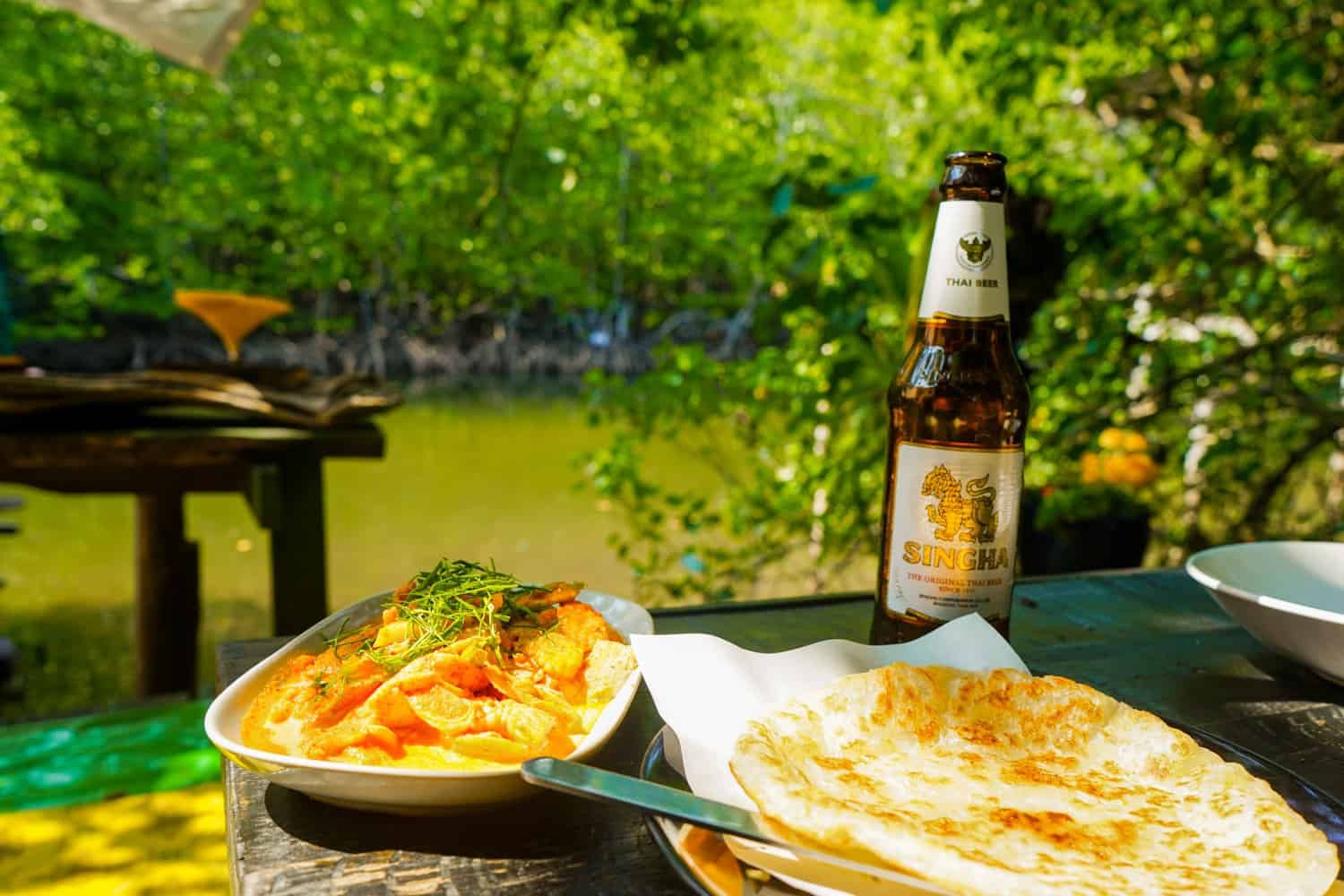
Now, I can’t write about travel in Thailand without discussing alcohol. After all, this is the country that invented the Full Moon Party! If you like a drink, you’ll be thrilled to uncover an multitude of methods for developing a hangover.
Beer is cheap in Thailand, averaging out to 100฿ for a large bottle (620 ml) in restaurants, so thats around £2, or €2.50/$2.80. It’ll be a little cheaper on the mainland (80฿) than on the islands (140฿), and more expensive in a fancy bar or restaurant (180฿). The big three beer brands in Thailand are Chang, Leo, and Singha; in my opinion, Singha is the only one that’s drinkable, but Chang is usually the cheapest.
Down on the Thai islands, you’ll come across buckets aplenty. It is, as you can probably guess, an excellent way to get drunk. You can expect to pay roughly 300฿ for a bucket of coke, whiskey, and Red Bull. Make sure you watch the vendor make the bucket, so you have some idea of how much alcohol is in it! I’ve seen some places pour in two shots and some as many as eight! The average is around five shots.
I usually recommend steering clear of wine and cocktails in Thailand, unless you’re visiting a specialty wine bar or cocktail bar.
The rooftop bars of Bangkok are a great-but-pricey place to go for a high-end drink, especially at sunset — you’ll be looking at 350B ($10) for a cocktail or glass of imported wine there (don’t even try the local wines!).
On the islands, the wine is usually terrible and the cocktails are sometimes made using spirits of dubious origin. I definitely have felt like I’ve been poisoned by Ethanol before, so check the reviews of anywhere you visit! The alcohol is similarly priced, however: around 350B for a cocktail at a beach bar.
To save money on alcohol, you’re best to head to a grocery store to pick some up. The typical prices at 7-Eleven are:
- 320 ml bottle of Singha: 40B
- 330ml of Corona: 70B
- 750ml bottle of imported wine: 350B
- 300 ml bottle of Thai whiskey (Songsam): 150B
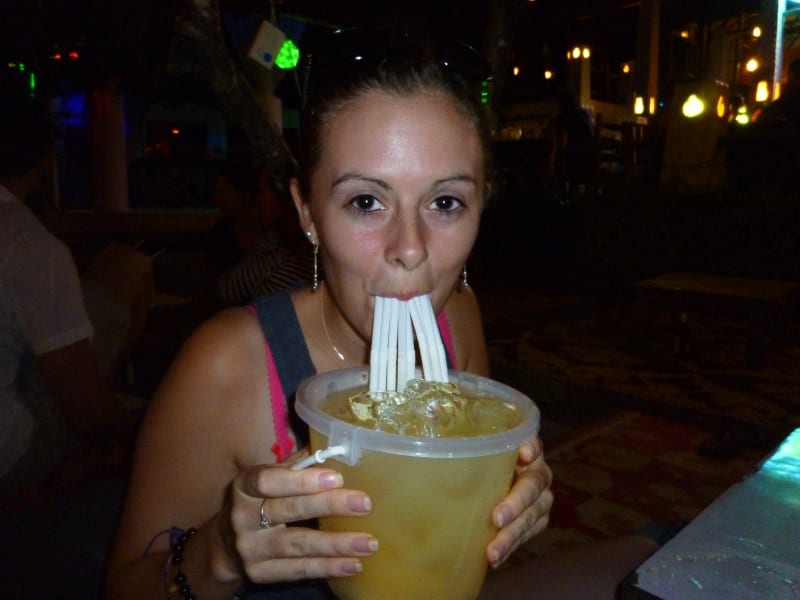
That’s not to say that a holiday in Thailand has to revolve around alcohol. I’ve island-hopped around this country while remaining completely sober at times and still had an incredible time (and saved lots of money by doing so)!
The tap water isn’t safe to drink in Thailand and I suspect that several of my upset stomachs were caused by me brushing my teeth with the water. Do take precautions here and try to avoid getting water in your mouth while showering or brushing your teeth. The ice in drinks is totally safe, however, so you don’t have to worry about ordering yours without.
Because of this, you’ll likely be regularly hitting up the 7-Eleven to buy some water; your plastic consumption is going to be high in this country. I travel with a GRAYL now and recommend it to everyone I talk to. It’s a water bottle that filters tap water and makes it safe and drinkable! I’ve tested out and used it to drink the tap water in countries like India, Mozambique, and the Congo and never fallen unwell. It’s a good way to cut down on your plastic bottle usage while also saving a bit of money.
Here are some of the costs for buying non-alcoholic drinks in Thailand, in 7-Eleven grocery stores:
- 600 ml of water at a 7-11: 7B
- 1.5l of water at a 7-11: 20B
- 150ml of red bull: 10B
- Small can of coffee: 16B
- Bottle of Coke/Sprite/Fanta: 19B
And from restaurants or street food stalls:
- Fresh fruit smoothie: 40B
- Espresso: 60-80B
- Flat white: 70-100B
- Honey lemon tea: 50B
- Coke/Sprite/Lemon soda: 40B
- Water: 30B
The Cost of Activities in Thailand
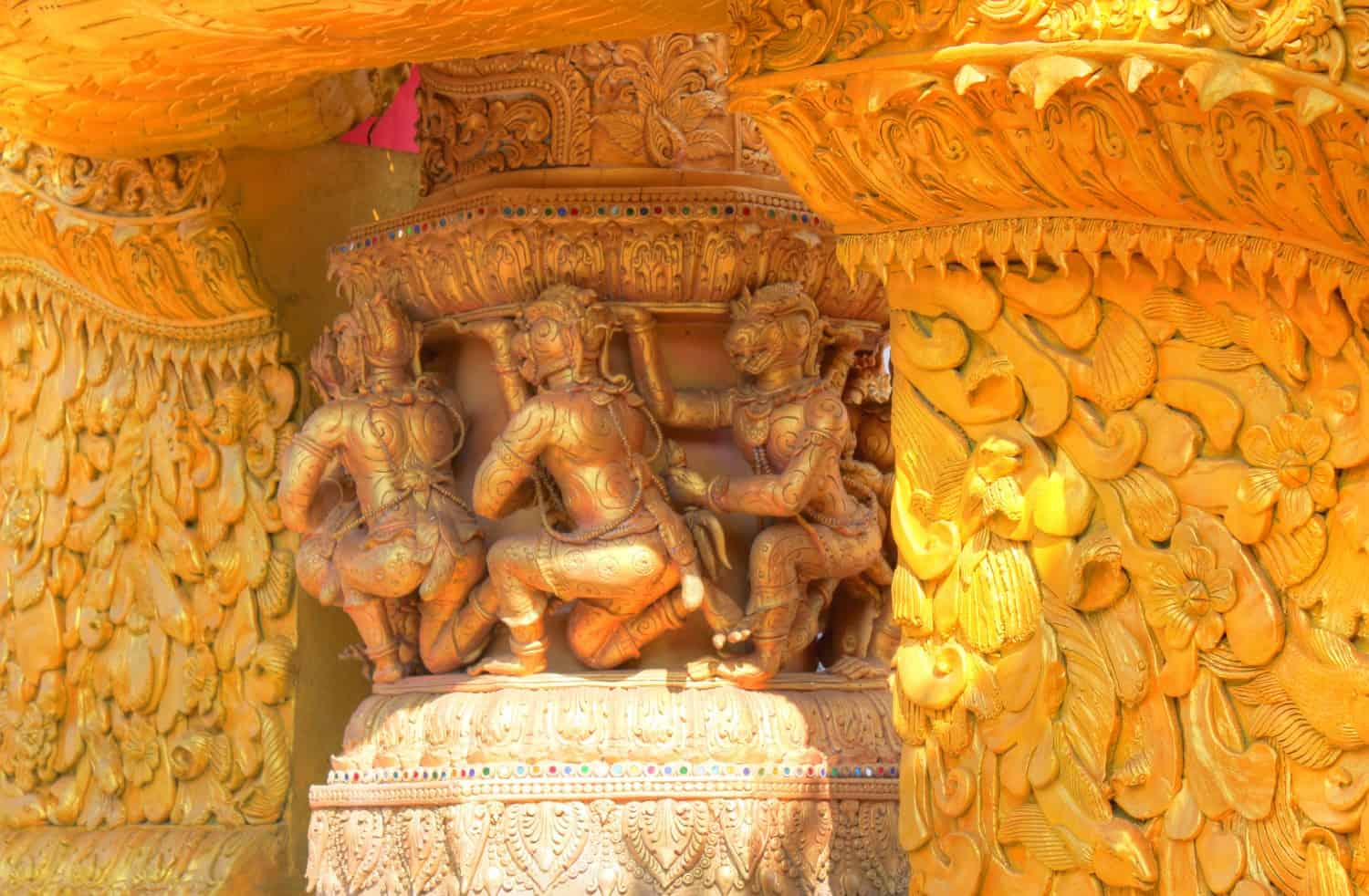
The good news about somewhere like Thailand is that you can save a lot of money on activities. If you’re planning to spend the entirety of your trip on the islands, you won’t need to spend much on activities at all: lying on the beach is totally free!
Likewise, on the mainland, simply wandering the streets and people-watching is a free activity and one that’s always interesting. The temples of Thailand — the wats — are almost always free to enter and interesting to explore. Every traveller to Thailand hits Wat Burnout at some point, though: they’re well and truly templed out.
Entrance fees to museums and attractions are rarely expensive; these are the main sites you’re likely to visit on your trip:
- Wat Pho, Bangkok: 300B
- Wat Arun, Bangkok: 100B
- The Grand Palace, Bangkok: 500B
- Wat Phra That Doi Suthep, Chiang Mai: 30B
Thai food is such a big part of travelling to Thailand that most visitors end up jumping on a food tour or cooking class at some point. I recommend taking the food tour in Bangkok and the cooking class in Chiang Mai. I’m a huge fan of the Backstreet Bangkok food tour ($60), which lasts four hours and includes 15 tastings around the city. For a cooking class, I recommend the half-day cooking class ($23) that takes you out of Chiang Mai into the countryside to cook your meals on an organic farm.
The other thing that every visitor to Thailand does is visit an elephant sanctuary! It’s not quite as simple as it sounds, however, as the vast majority of these experiences are harmful and abusive to the elephants. If an experience includes elephant-riding, becoming a mahout for the day, or any form of elephant show, that’s one to stay away from. This is a topic that’s close to my heart, as a friend of mine worked with abused elephants for several years in Thailand.
I’m a fan of the Phuket Elephant Sanctuary ($85 to spend a morning with the elephants) and Elephant Nature Park in Chiang Mai ($70 to spend a morning/afternoon with the elephants).
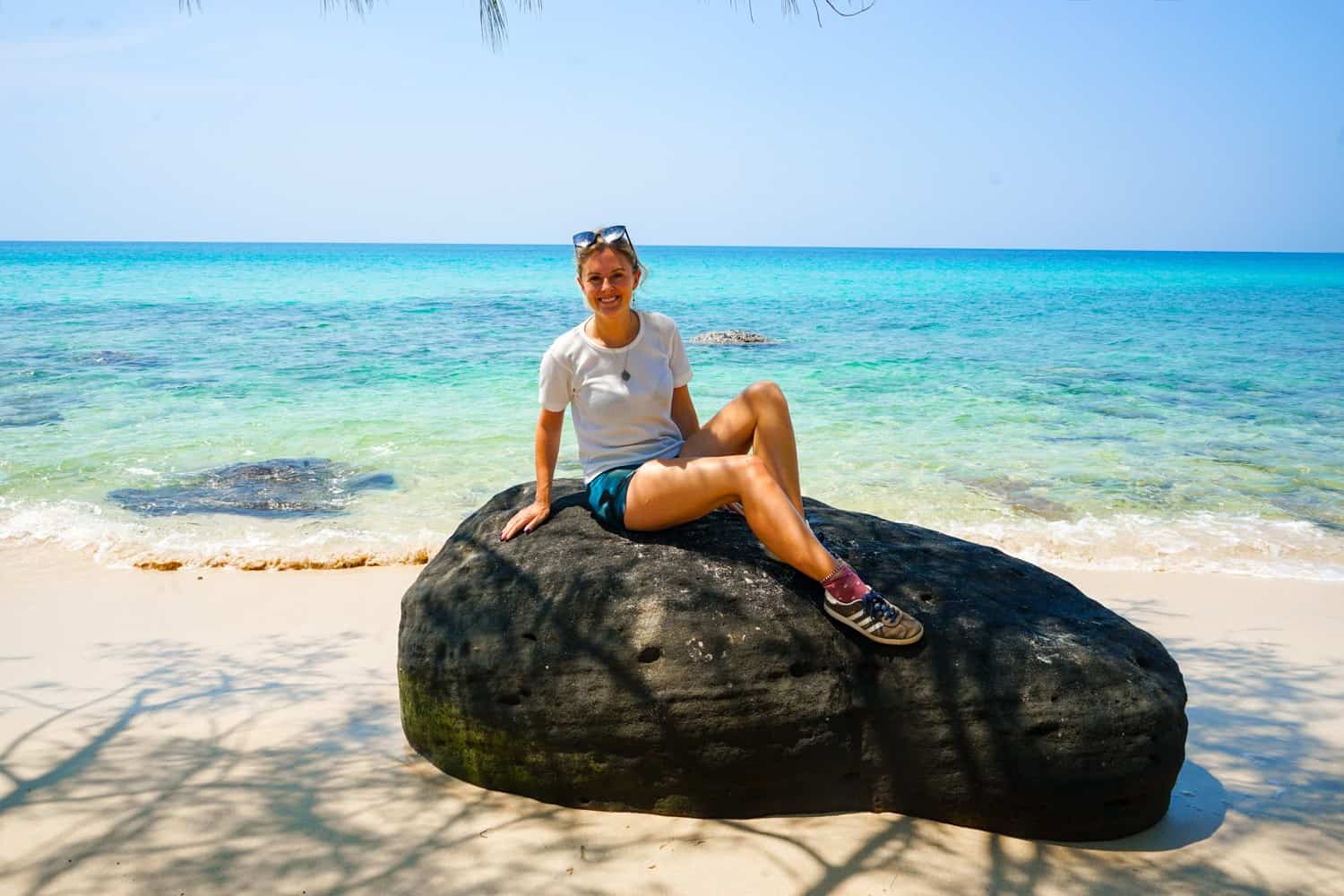
How Much Does it Cost to Travel in Thailand?
At the end of my budget breakdowns, I always like to give an estimate of exactly how much you can expect to spend in a country. Here’s what I recommend for Thailand:
| Backpacker | Flashpacker | Mid-range | Luxury | |
| Accommodation | $10 a day | $25 a day | $40 a day | $70 a day |
| Transportation | $5 a day | $8 a day | $15 a day | $25 a day |
| Food | $8 a day | $12 a day | $15 a day | $25 a day |
| Activities | $3 day | $5 a day | $10 a day | $30 a day |
| Total | $26 a day | $50 a day | $80 a day | $150 a day |

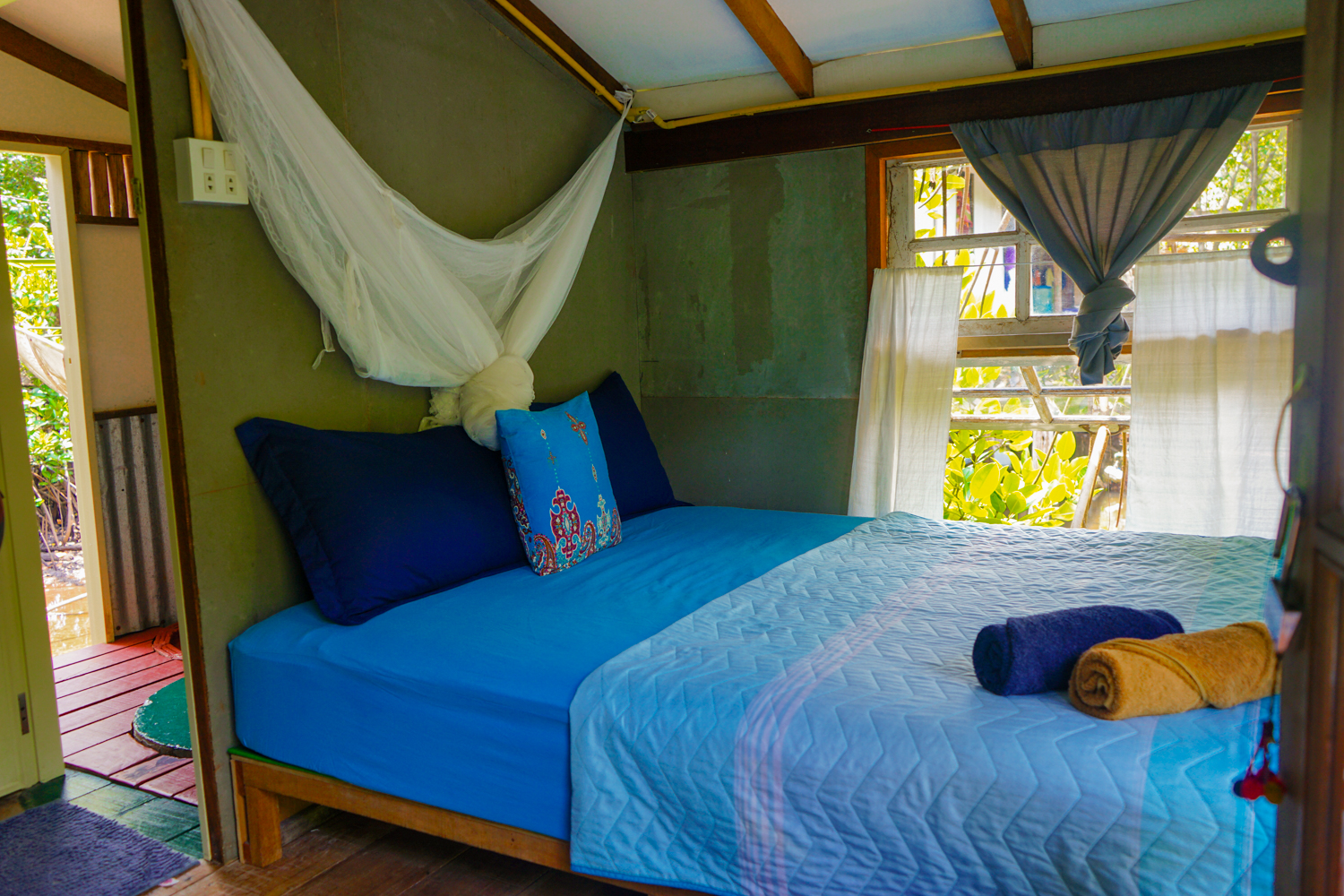
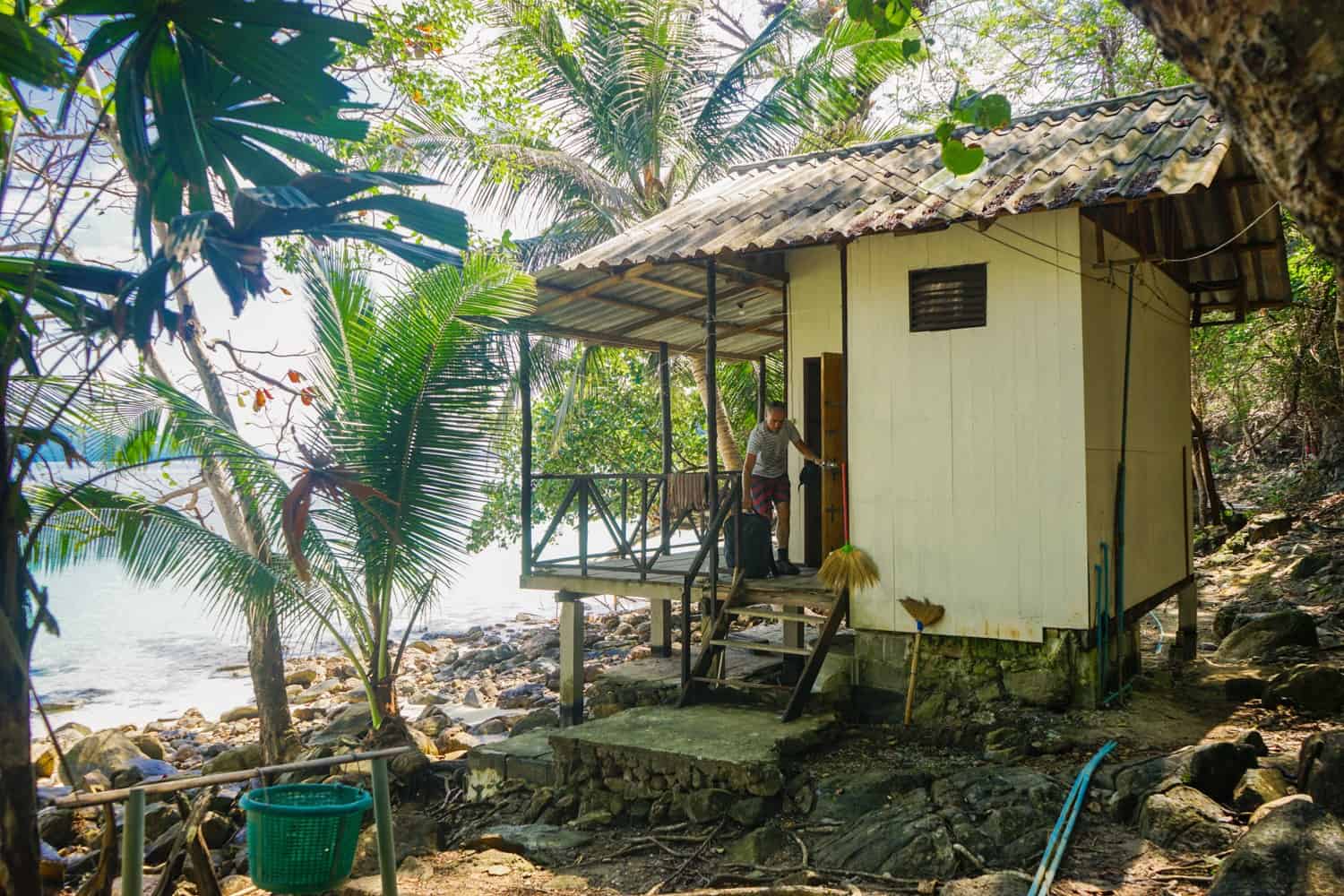






I went in 2013 and the islands I visited were Koh Lanta and Koh Yao after reading your blog. I am counting down the days I get to go back to this amazing country!